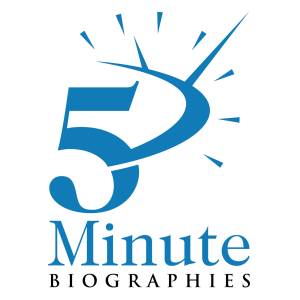
Buddy Holly, a name synonymous with the early days of rock ‘n’ roll, was born Charles Hardin Holley on 7 September 1936 in Lubbock, Texas. He was born into a musical family, the youngest of four children to Lawrence Odell Holley and Ella Pauline Drake. His upbringing in Lubbock, a small city on the South Plains of Texas, was steeped in the sounds of country and Western music, which were pervasive in the region. The Holley family frequently played and sang together, and it was evident early on that Buddy had a natural aptitude for music.
From a young age, Holly showed a keen interest in music. He learned to play the piano and fiddle before switching to the guitar, which would become his primary instrument. His older brothers, Larry and Travis, nurtured his musical talent and taught him chords and playing techniques. By age 11, Holly had formed a duo with his friend Bob Montgomery, performing country and western songs under the name Buddy and Bob at local talent shows and on the radio station KDAV in Lubbock.
Holly attended Hutchinson Junior High and Lubbock High School, where his musical interests continued to flourish. He was a school band and choir member, and his performances on KDAV gave him local celebrity status. During high school, Holly became increasingly influenced by rhythm and blues, a genre that would heavily influence his later work. He admired artists such as Hank Williams, Jimmie Rodgers, and Elvis Presley, whose performances Holly witnessed firsthand in 1955. Elvis’s energetic stage presence and musical style made a significant impression on him.
After graduating high school in 1955, Holly decided to pursue a music career full-time, and his big break came in 1956 when he and the band, which had since taken on a standup bass player and a drummer, opened for Bill Haley & His Comets in Lubbock. This performance led to a contract with Decca Records in Nashville, where the misspelling of his name occurred, so he became known as Buddy Holly (H O L L Y rather than H O L L E Y). However, his early recordings with Decca were not commercially successful, and the label dropped him in 1957.
Undeterred, Holly returned to Lubbock and formed a new band, The Crickets, with Niki Sullivan, Larry Welborn, and Jerry Allison. The group began recording at Norman Petty’s studio in Clovis, New Mexico. It was here that they recorded “That’ll Be the Day,” a song inspired by a line from a John Wayne film called The Searchers. Released by Brunswick Records, the song became a hit, reaching number one on Billboard Magazine’s best sellers in stores chart in 1957. It also peaked at number 1 in the UK singles chart, occupying the position for three weeks from November of the same year.
Holly became an unlikely rock ‘n’ roll star with his trademark thick-rimmed glasses and unassuming demeanour. His innovative guitar techniques, clear tenor voice, and songwriting prowess set him apart from his contemporaries. Hits like “Peggy Sue,” “Oh, Boy!,” “Maybe Baby,” and “Rave On” solidified his status as a leading figure in rock ‘n’ roll. Holly was among the first artists to utilise studio overdubbing, layering multiple tracks to create a fuller sound.
Despite his success, Holly’s career was marked by financial struggles and disputes with his manager, Norman Petty. He decided to split from Petty and move to New York City, where he met María Elena Santiago, a receptionist he had met while visiting a music publisher. He fell for her instantly and proposed marriage on their first date, and the couple were married on 15 August 1958.
The Crickets decided to stay with Petty and did not want to leave their home state, so they split from Holly.
In early 1959, Holly joined the Winter Dance Party tour, a gruelling series of performances across the Midwest. The tour’s conditions were harsh, with long bus rides in freezing weather. Following the show at the Surf Ballroom in Clear Lake, Iowa, and in an attempt to make the tour a little less arduous, Holly decided to charter a small plane to take him to the next stop on the tour at Moorhead, Minnesota. Tragically, the plane crashed shortly after take-off on the morning of 3 February 1959, killing Holly, along with fellow musicians Ritchie Valens and J.P. “The Big Bopper” Richardson, and the pilot, Roger Peterson.
Buddy Holly’s death at the age of 22 was a devastating loss to the music world. Despite his brief career, Holly’s influence on rock’ n’ roll was immense. He inspired a generation of musicians, including The Beatles, The Rolling Stones, and Bob Dylan, who cited Holly as a significant influence on their music. Holly’s innovative approach to songwriting and recording and his pioneering spirit left an indelible mark on the industry.
Buddy Holly’s legacy endures through his timeless music, which continues to be celebrated by fans and musicians alike. His life and career, though tragically short, exemplify the enduring power of rock ‘n’ roll and its ability to transcend time and place.
More Episodes
 2024-11-04
2024-11-04
 2024-10-27
2024-10-27
 2024-10-25
2024-10-25
 2024-10-23
2024-10-23
 2024-10-21
2024-10-21
 2024-10-19
2024-10-19
 2024-10-17
2024-10-17
 2024-10-15
2024-10-15
 2024-10-13
2024-10-13
 2024-10-11
2024-10-11
 2024-10-09
2024-10-09
 2024-10-07
2024-10-07
 2024-09-30
2024-09-30
 2024-09-23
2024-09-23
 2024-09-16
2024-09-16
 2024-09-09
2024-09-09
 2024-09-02
2024-09-02
 2024-08-26
2024-08-26
 2024-08-19
2024-08-19
Create your
podcast in
minutes
- Full-featured podcast site
- Unlimited storage and bandwidth
- Comprehensive podcast stats
- Distribute to Apple Podcasts, Spotify, and more
- Make money with your podcast
It is Free
- Privacy Policy
- Cookie Policy
- Terms of Use
- Consent Preferences
- Copyright © 2015-2024 Podbean.com






